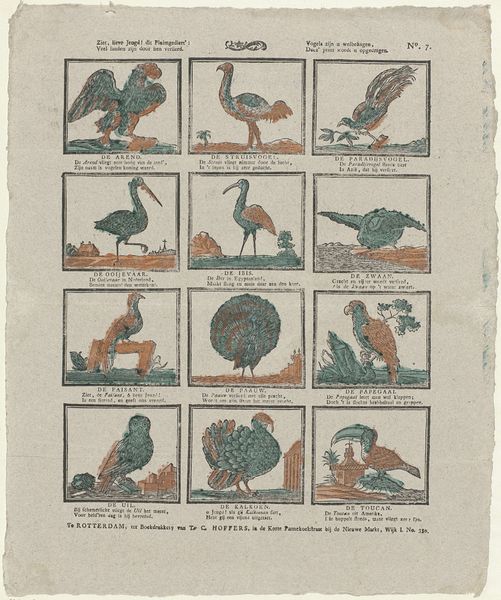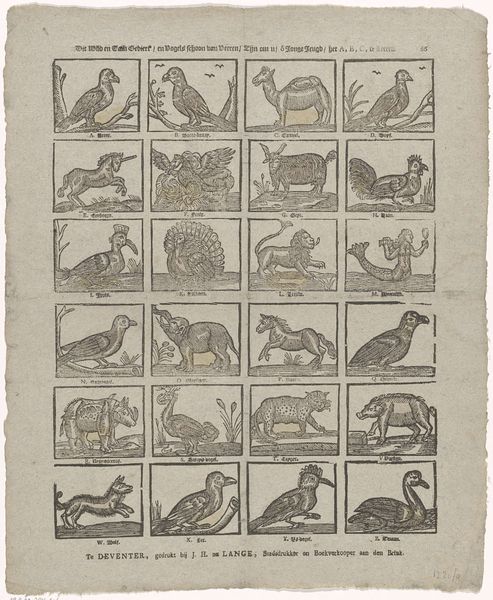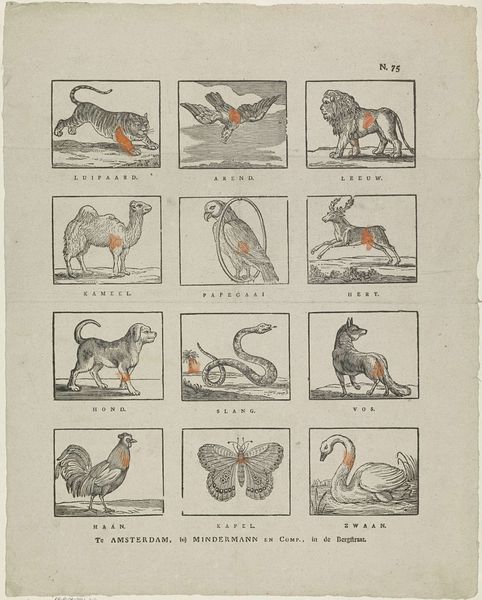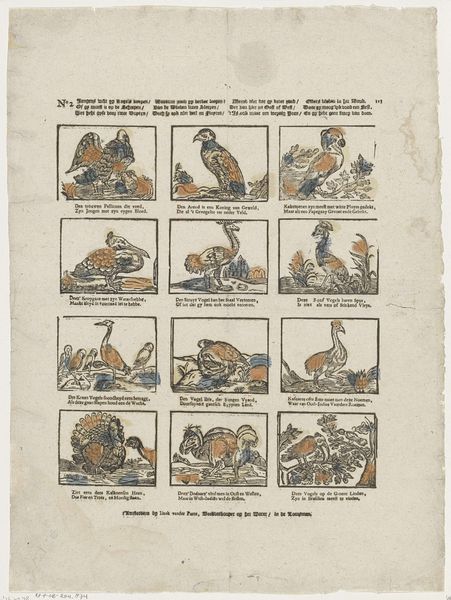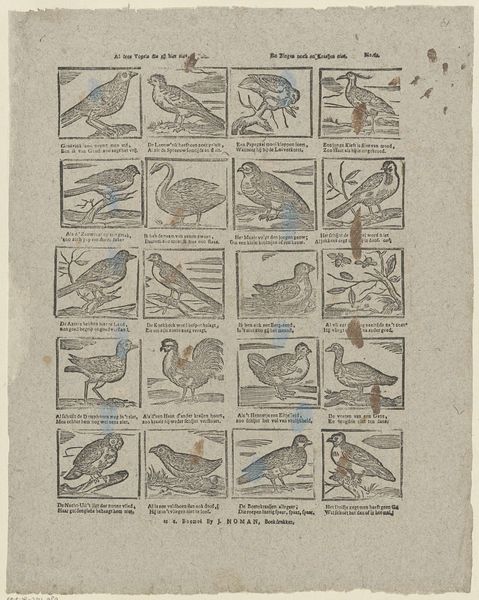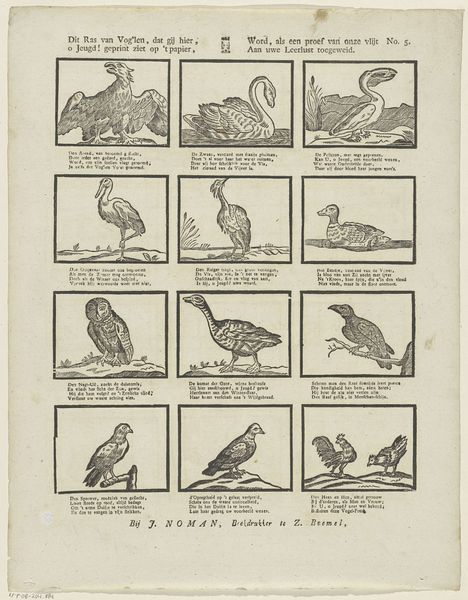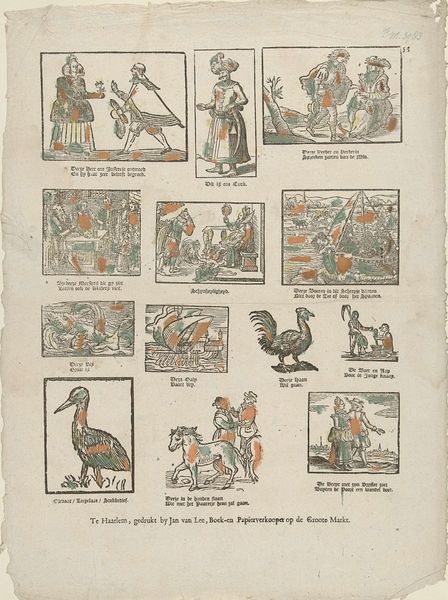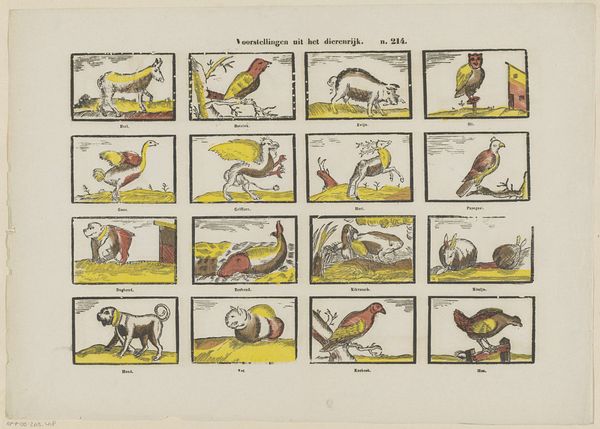
print, woodcut, engraving
# print
#
woodcut
#
genre-painting
#
engraving
#
realism
Dimensions: height 412 mm, width 329 mm
Copyright: Rijks Museum: Open Domain
Curator: This print, “Dieren,” made sometime between 1822 and 1849 by Schalekamp & Van de Grampel, features various animals rendered with woodcut and engraving techniques. It strikes me as a rather functional object; it doesn't have any immediate expressive qualities. What's your take? Editor: Yes, functional is a good word. It’s like a chart, almost like a bestiary. I’m curious about why these particular animals were chosen, and how this print might have been used. Curator: Well, looking at the materials and production – the woodcut, the engraving – suggests a wide distribution and, therefore, affordability. This wasn’t a precious object for an elite collector. Do you think that influences its purpose and meaning? Editor: Definitely! The choice of relatively cheap printing methods suggests a larger audience. It's not a painting meant to be appreciated from afar. Was it educational, maybe? Perhaps for children? Curator: Possibly. Now, think about the context of early 19th-century Amsterdam, where Schalekamp & Van de Grampel operated. The location of their shop is even listed. How does situating the piece within that specific social and economic fabric change our understanding of the image and its intent? Is it about simply portraying these animals or perhaps disseminating a specific cultural vision, or creating a trade item? Editor: That's fascinating! So, understanding the shop's role within the community is key. It makes me think about the consumption of images during this time. It shifts the focus from art for art's sake to art as a commodity. Curator: Precisely. The print’s value then isn’t purely aesthetic; it lies in its accessibility, its role as a visual tool for a specific segment of society. The image becomes more like a resource. Editor: I see. It is less about "what does this mean" and more about "what did this *do*?" Viewing it from the lens of production and distribution completely transforms my understanding of its function. Thanks for that.
Comments
No comments
Be the first to comment and join the conversation on the ultimate creative platform.

